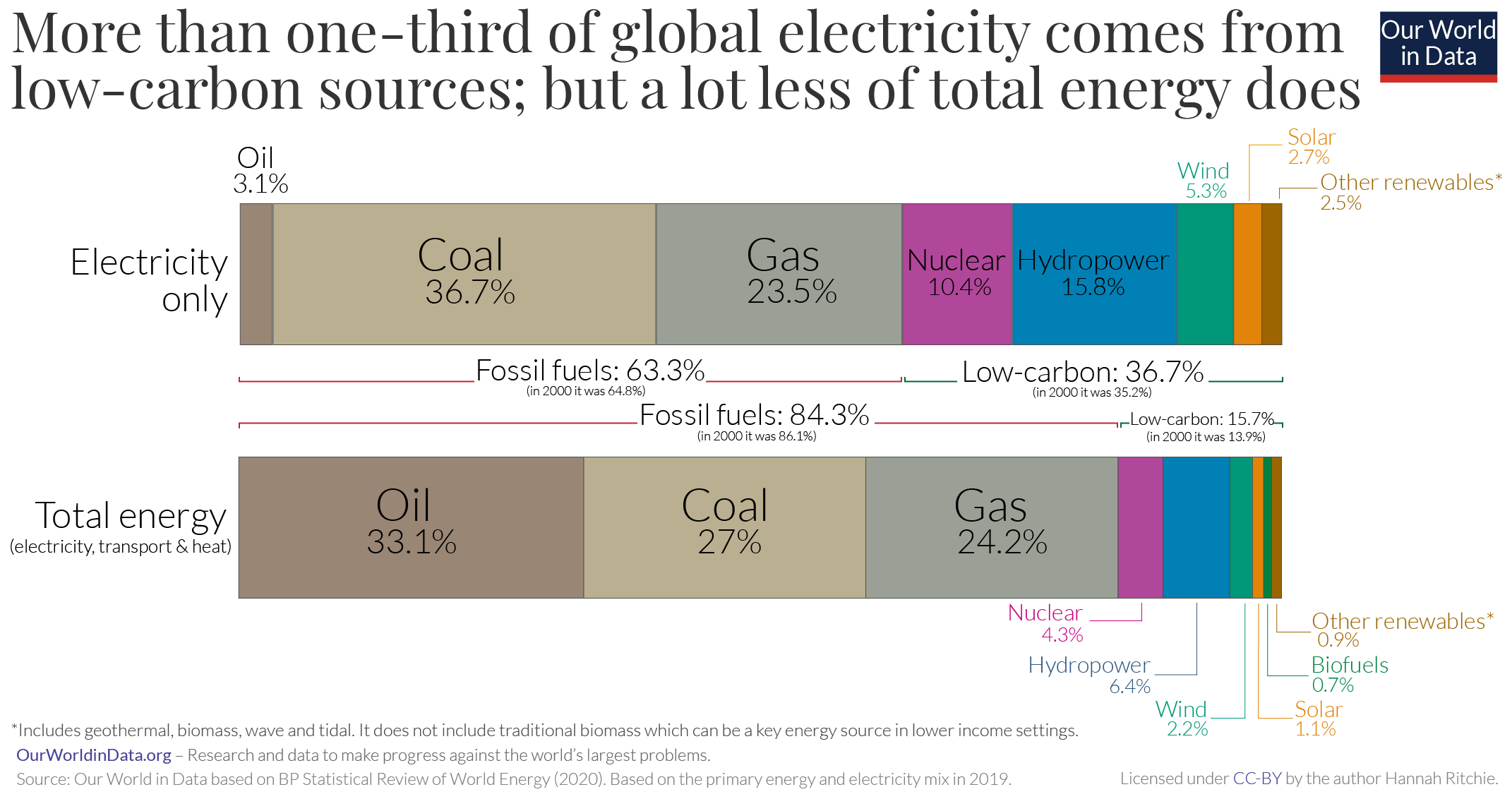Solar and wind generation are growing quickly across the world.
Such progress often makes the headlines, but often these headlines get things wrong. They refer to the electricity system as if it was the entire energy system. Here is one recent example:
→ More UK energy is coming from clean sources than fossil fuels for the first time ever, National Grid announces (Independent, 2020)
Electricity – often referred to as ‘power’ – is just one component of total energy consumption. The other two components being (non-electric) transport and heating.
Many countries are making progress on clean electricity, but progress on energy as a whole is much slower.
Let’s compare the breakdown of the global energy and electricity mix – these are shown in the chart. Electricity at the top; total energy at the bottom.
We see a large difference between the share that comes from low-carbon sources. Nuclear and renewables account for more than one-third (36.7%) of global electricity. But they account for less than half that figure (15.7%) of the total energy mix. This is because the other elements of the energy demand – transport and heating – still rely much more heavily on fossil fuels.
Since transport and heating are harder to decarbonize, we will have to achieve two things. First, electrify as much of our energy system as we can – such as switching to electric vehicles. Second, rapidly increase the amount of low-carbon electricity we produce.
When we see headlines on progress in decarbonizing the electricity sector we need to remember that it is just one part of the energy story. If we don’t, we risk falling into a false sense of progress and let leaders, governments and companies boast achievements that are not nearly ambitious enough.



